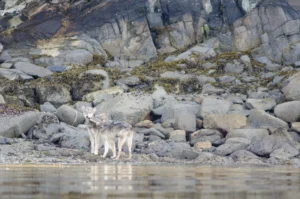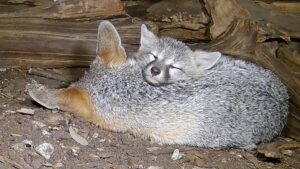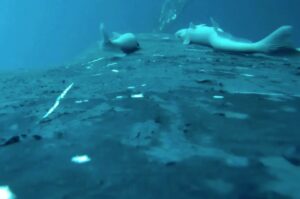Imagine a snake longer than a shipping container — longer than a T-Rex — slithering through a swamp, hunting crocodiles.
It’s the biggest snake that ever lived, researchers think, after unearthing its remains from a strip mine in India.
Vasuki indicus is named after the Hindu snake god that Shiva wore as a necklace. Based on 27 vertebrae paleontologists dug up from the lignite mine that became the beast’s tomb, estimates hold that it could have been 15 meters long.
Del Eocene medio la Vasuki indicus tiene una longitud corporal estimada de entre 11 y 15 metros esto lo haría la serpiente más grande el mundo!, de lo qué sabemos de la serpiente extinta son 27 vértebras https://t.co/SL5BjYssBC pic.twitter.com/YLd121IRq1
— Scar king(Ferrus) (@Destroyer397) April 19, 2024
But it still could have snuck up on you.
“Considering its large size, Vasuki was a slow-moving ambush predator that would subdue its prey through constriction like anacondas and pythons. This snake lived in a marshy swamp near the coast at a time when global temperatures were higher than today,” Debajit Datta, a paleontologist at the Indian Institute of Technology Roorkee, told Reuters.
A one-ton snake
Datta led the study into Vasuki indicus, which was published this week in the journal Scientific Reports. On the low end, Vasuki would have been about 11 meters long and weighed a metric ton. The researchers had no choice but to base those figures on vertebrae — the animal’s only remains. The biggest example they found was 11cm wide.
Vasuki was part of the Madtsoiidae snake family, a long-lived reptile group that appeared some 90 million years ago and went extinct about 12,000 years ago. If estimates of its size are accurate, it will edge out the current largest-ever snake — the Cenozoic Titanoboa, at 13 meters long.
Vasuki’s world was scorching, compared to today’s. Global surface temperature now hovers around 15 degrees C, but the Middle Eocene period saw that average soar to 28 degrees. It also thrived while the supercontinent Gondwana was in the process of rending apart, laying the foundation for the world map we know today.
“Vasuki was a majestic animal,” Datta said. “It may well have been a gentle giant, resting its head on a high porch formed by coiling its massive body for most of the day or moving sluggishly through the swamp like an endless train. In some ways, it reminds me of Kaa from The Jungle Book.“






